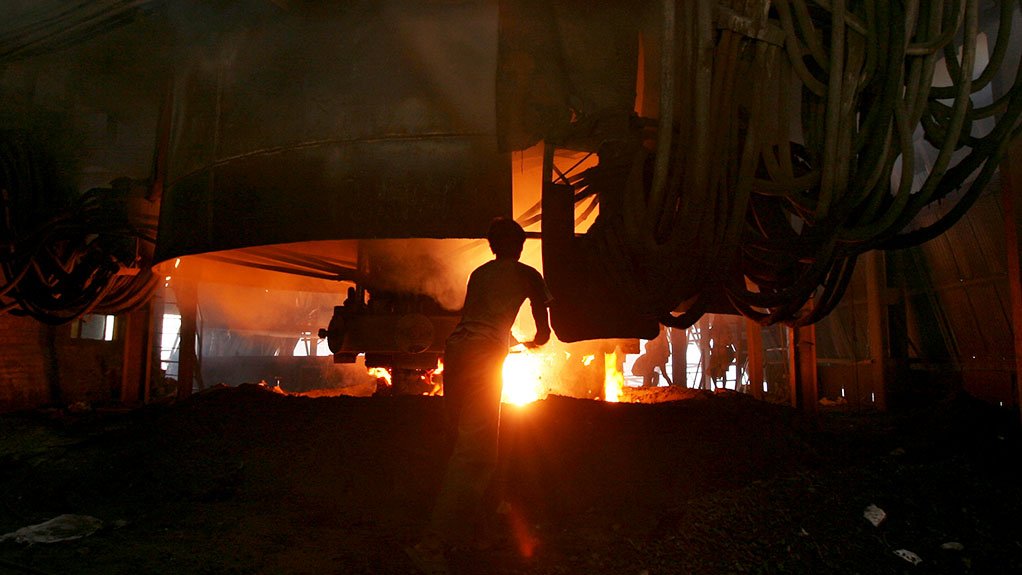A policy decision to allow electricity-intensive companies operating in South Africa to enter into negotiated pricing agreements (NPAs) with Eskom is set to contribute 5.7% to any tariff increase approved for implementation in respect of standard-tariff customers on April 1 next year.
Eskom has included an application for 10 additional NPAs in its larger submission to the National Energy Regulator of South Africa (Nersa) for allowable revenue of R445.6-billion for its 2026 financial year. If approved in full, this would translate to a 36.15% tariff hike next year and raise the standard tariff to 266.78c/kWh from 195.74c/kWh.
Eskom has not disclosed a revenue value associated with accommodating the subsidy for the 10 additional NPAs included in its submission. However, a 5.7% increase in Eskom’s allowable revenue of R352-billion for the 2025 financial year implies that an additional R20-billion is being sought.
In the submission, Eskom indicates that electricity sales to NPA customers will be about 23 TWh a year, while it estimates sales to standard-tariff customers of 152.8 TWh.
If accepted by Nersa, the 152.8 TWh in sales will represent a significant decline from the 170 TWh estimated for the current financial year, when only two NPAs with South32 and Sublime Technologies were accommodated in the tariff.
However, it is possible that the sales assumption will be adjusted during the upcoming public hearings in light of more stable operating conditions across the coal fleet, which has resulted in a suspension of loadshedding for more than 200 days, and the higher growth expectations associated with the formation of the Government of National Unity.
Should that be the case, the requested tariff hike could be moderated.
Eskom also does not include the names of the 10 additional NPA beneficiaries, confirming only that it has implemented such agreements with customers in the aluminium, ferrochrome, and silicon carbide sectors in line with NPAs approved by Nersa in accordance with the frameworks approved by the Department of Mineral Resource and Energy.
The NPA framework was implemented by government in 2021 in a bid to prevent electricity-intensive businesses beneficiating mined commodities from curtailing or shutting production, owing to the steep rise in electricity tariffs.
Applicants for the incentive have to prove that electricity is a significant driver of their operating costs, and that they are consuming a minimum of 80 GWh yearly at a load factor of greater than 70%.
In its submission, Eskom says the NPAs are structured to ensure the global competitiveness of the sector from an electricity price perspective and to protect vulnerable sectors.
“South Africa is better off with these customers in the sales base as the NPA structure ensures the relevant variable costs of electricity supply are covered by the tariff and a positive contribution is made to the fixed cost.
“The typically flatter time-of-use and no seasonal differentiated NPA tariff could result in even usage throughout the year with a likely increase in sales which would partly offset the differential between the NPA tariff and standard tariff,” it adds.
Eskom says that, in the absence of an NPA, the sustainability of several industries would come into question which could result in potential cut-backs in production or closures.
“This would result in additional upward electricity price pressure on the remainder of the customer base than would otherwise be the case due to loss of contributions to fixed costs.”
Besides the NPA subsidy, Eskom has applied for a 29.58% increase in the affordability subsidy charge on key industrial customers, which helps cross-subsidise poor households, but adds about R7-billion to the revenue application.
In a briefing, CFO Calib Cassim stressed that the subsidies, together with several other policy measures outside of Eskom’s direct control, accounted for about 50% of the revenue being requested. The balance arose from production costs, including primary energy and operational and maintenance costs.
He said a bigger governmental discussion was required on how to deal with the cost-to-consumers associated with policy decisions, but argued that the key priority for Eskom was to find a way to deal with outstanding municipal-arrear debt, which stood at R85-billion, including R11-billion arising from metropolitan councils.
This rise came despite 72 municipalities having signed up to the National Treasury’s debt-relief programme, which had proved ineffectual, with only 14 municipalities complying with the conditions currently.
If the debt continued to rise on the current trajectory, it would reach R200-billion by Eskom’s 2028 financial year.
Eskom is seeking to recover R8.9-billion in revenue to cover a portion of its arrear debt. If granted, the request will contribute 2.6% to the 36.15% tariff hike being sought, while raising questions about the fairness of approaching paying customers to address a failure to collect from non-paying customers.
Cassim also stressed that, while the 4% return on assets included in the application reflected a step change from the 1.58% approved previously, and would yield revenue of R42.6-billion if approved, it was still well below levels considered sustainable.
He acknowledged that migrating to Eskom’s current cost of capital level of closer to 10.5% could not be done “overnight”, however, as it would have resulted in an application for a 70%-plus hike rather than the 36.15% application that has already been roundly rejected by both government and civil society.
EMAIL THIS ARTICLE SAVE THIS ARTICLE ARTICLE ENQUIRY
To subscribe email subscriptions@creamermedia.co.za or click here
To advertise email advertising@creamermedia.co.za or click here











